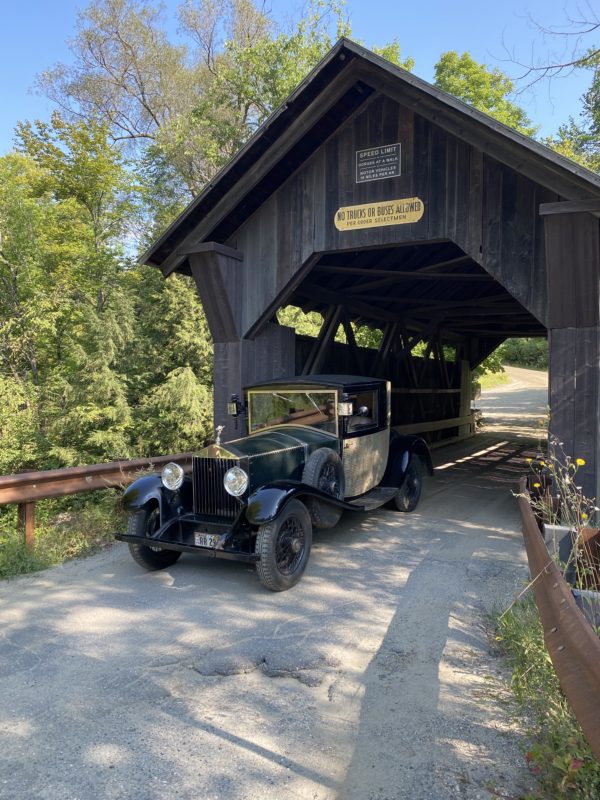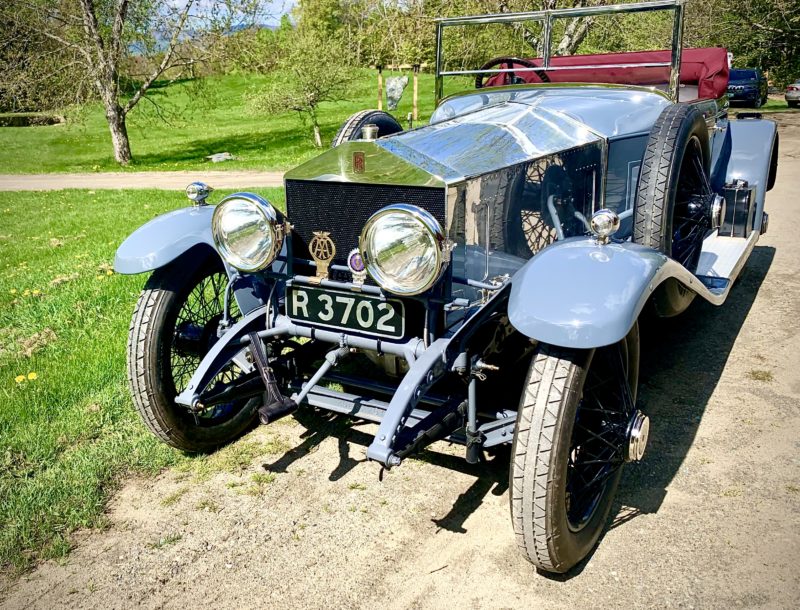The Vintage Garage, operating since 1965, provides engine rebuilding, mechanical restoration, and servicing for antique cars. Fine Art Shippers sat down with its owner Pierce Reid to talk about the fascinating world of vintage cars, the market, and the non-monetary value of old vehicles passed down through generations.
The Art of Vintage Car Restoration
Can you tell us about your journey into the world of car restoration? How did you first develop an interest in this field?
Pierce Reid: I'm from a generation where we were all interested in cars, especially living in a relatively rural area. Back then, we didn't have a lot of TV channels, but what we did have were toolkits. If we wanted our vehicles to go faster, look better, or have a unique touch, we did it ourselves. When I finished college and started my career in the high-tech industry, my teenage hobby stayed with me.
Over the years, I got interested in motorcycles, owned a couple of Porsches and Land Rovers, and eventually Rolls-Royces and Bentleys in the 1990s. What drew me to these brands was complexity, precision, and attention to detail.
When I left the high-tech field in the early 2000s, I decided to start my own business, thinking I could give it a shot for a year or so. If it didn't work out, I could always consider it a sabbatical and return to my desk job. But the truth is, it never stopped. What I do now can best be described as a hobby that went out of control. As they say, when you turn your hobby into work you don't work a day in your life.
How would you describe the current state of the vintage car market today? How is it segmented? Which cars are available?
Let me give some background on The Vintage Garage first. It is a merger between my shop and the original vintage garage from Massachusetts, which has been operating since 1964.
So we have a rich institutional memory, being involved in the vintage car hobby and professional restoration for a long time. But we don’t buy, sell, or broker cars. I made a deliberate choice to avoid becoming a used car dealer. Still, we have extensive knowledge of the market and offer assistance to clients in finding or disposing of vehicles without charging any fees.
As for the antique and vintage car market, I can say it’s vast, both in the United States and worldwide. It can be segmented into categories such as exotic cars designed to be collectible, driver cars that are still in use, and true classics, including pre-war vehicles with varying values.
If you are looking at the investment market, your focus would be on a small percentage of cars that are considered investment-grade. These vehicles are highly influenced by market trends and fluctuations. There’s another market segment where you find commercial cars that people collect mainly for the sentimental value they hold for them: this could be one your dad used to drive or a car you wanted so much as a teenager. So there’s something to everyone’s taste.
What should I consider if I want to buy a vintage car?
Like with other collectibles, the first thing you should consider is personal appeal because you can fix anything but ugly. Before buying a vintage car, think what you want to do with it. Are you looking for a touring vehicle or a reliable daily driver? Or perhaps you're interested in participating in a concours circuit?
I highly recommend purchasing a car that has already been restored by a reputable shop. This would save you from undoing someone else's work or overpaying for restoration with hidden flaws. The best cars often change hands through personal connections within clubs or individuals. I would advise avoiding online platforms like eBay because you need to inspect and drive a car before making a purchase.
Once you have a vehicle, you have to decide the level of restoration you desire. It can range from cleaning and touch-ups to full frame-off restorations. Do thorough research to find out what work has been done and review photos and invoices—that will help determine the extent of the restoration you need. There is a growing trend towards conservation, that is preserving cars with decent original paint and interiors and restoring or rebuilding to ensure reliability. Another option is hot-rodding with a full engine swap, which is something we don't get into but is very popular.
Living with an antique car involves considering practical aspects, such as storage and the suitability of the car for your lifestyle. Say, you live in a deep urban area. Is taking a car that only goes 30 miles an hour across a New York bridge a realistic choice for you? If you are buying investment-grade cars like Bugattis, Mercedes 500 Ks, or vintage Bentleys, they can bring significant returns if purchased wisely. However, restoring them to the investment-grade level requires a substantial upfront investment. So, there are all things to consider.
Where do you and other vintage car restorers source spare parts?
The availability of spare parts depends on the era of the car. This is particularly true for pre-war vehicles that were often handmade. For high-end cars like Rolls-Royce and Bentley, there are specific parts supply chains. The Rolls-Royce and Bentley Specialists’ Association (RRBSA) ensures that restorers, maintainers, and parts producers are vetted and can be trusted. Other high-end brands like Bugatti and Mercedes also have specialized centers that can supply or manufacture parts for their vehicles, even for older models.
Restoring parts for earlier cars is relatively easy as they were not designed to be disposable. For example, if a shaft is worn, it can be replaced and fitted with a new bushing or bearing. However, for rare models like a pre-war Jensen H4, sourcing parts can be extremely difficult— there are only four of them left!
The finishing process is also an interesting aspect of restoration. Early cars often used nitrocellulose lacquer or lacquer paint, which can be restored but is expensive and delicate. Sometimes, you make modern concessions. But there are situations where you want to bring a vintage car back to its original state, taking it all the way back with the right patent leather or painting it with stove enamel to achieve the desired authentic look.
Another interesting aspect is close plating. With the emergence of electroplating in the late twenties and its growing popularity in the thirties, the skill of close plating was almost lost. That’s why I often advise young aspiring car restorers that if they want a lifelong career that keeps them busy and financially secure, they should learn close plating.
What do you love most about your job? Can you tell us about some most interesting restoration projects?
I love working on what we call "basket cases." These are cars that arrive disassembled in baskets and boxes, with nothing bolted together. Recently, we had the opportunity to restore one of such basket cases, spending two days searching through an old carriage house and an antebellum mansion in the Midwest to find all the scattered parts. In this particular case, the parts of a Silver Ghost were mixed with those from two Lincoln 12-cylinder cars and a disassembled Chrysler.
Contrary to popular belief, finding old cars in a farmer's barn is not common anymore. Farmers usually know the value of what they have, and real discoveries now come from urban areas, especially former high-end neighborhoods that have fallen into disrepair. That made urban car archaeology very popular among car enthusiasts and collectors.
Another thing that brings me a lot of joy is conserving cars in their original condition. We specialize in protecting the original paint and finishes of vehicles while performing necessary mechanical restorations. Oftentimes, those are family cars that have been passed down through generations. For example, we are now working on a 1911 Buick that belonged to the great-grandfather of the current owner, a doctor in Tennessee. They still have the original bill of sale, notebooks with gas receipts and parts purchases, and even the toolbox attached to the back of the car. Even though the owners may not recover the restoration costs, the sentimental and historical value of preserving such is more important to them.
And of course, there are a lot of fascinating stories around high-end vintage cars — Rolls Royces, Bentleys, Dusenbergs, or Bugattis. The individuals who purchased them were influential figures, ranging from industry leaders to royalty. Uncovering the history of these cars adds an extra layer of intrigue. For example, we recently worked on an Alpine Eagle Silver Ghost. We traced its ownership back to its first owner in the 1930s, a member of the Symington family who was in the cork industry and used the car to travel around Europe buying and selling cork. And then we found footage of the car in a documentary shoot for the oil industry in Qatar in the 1950s. Such stories are amazing. Along with the joy of manual restoration, they make my job so exciting.
Interview by Inna Logunova
Photo courtesy of The Vintage Garage
Images in the order of appearance: -1923 Rolls-Royce 20 Horsepower with Barker Allweather Coupe coachwork reflected in the paint of a barrel-sided 1923 Rolls-Royce 20 with a replica barrel-sided touring car -1930 Rolls-Royce 20/25 Chassis GGP47 restored by The Vintage Garage. Photo by Mary White -1919 Rolls-Royce Silver Ghost Alpine Eagle Chassis 26CW restored by The Vintage Garage


